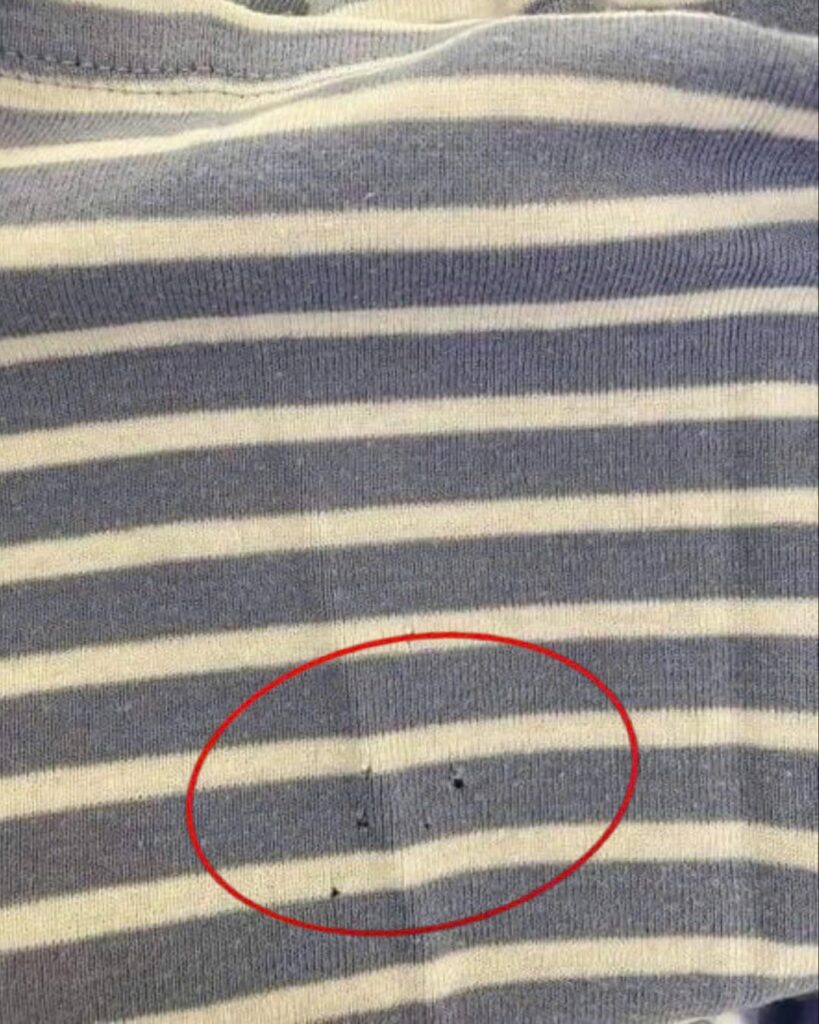The Usual Suspects: What’s Really Causing Those Holes?
Before you toss out your damaged clothing or start pointing fingers at moths, let’s look at the less obvious reasons your wardrobe might be falling victim to wear and tear. Yes, moths are one explanation — but they’re not the only one, and surprisingly, they’re not even the most common.
Let’s break down the main culprits.
1. Belt Buckles: The Silent Fabric Killer
One of the most frequent causes of tiny holes — especially those near your belly button area — is actually your belt buckle. Over time, even mild friction between your shirt and a metal buckle can create small tears, especially in delicate fabrics like cotton or jersey.
How to prevent it:
- Opt for smoother buckles or those with rounded edges.
- Try sanding down sharp corners on your favorite belt if you notice consistent wear in the same spot.
- Or go belt-free when possible (or use cloth belts for softer contact).
These changes might seem small, but they could drastically extend the life of your clothes.
2. Overloading the Washing Machine
Yes, even your washing routine might be sabotaging your clothing. When you cram too many items into your machine, the pressure from friction can grind the fabric against other garments, zippers, or the machine drum itself. This is especially harmful to thinner materials.
Tips to wash smarter:
- Don’t overload the washer. Give each piece of clothing enough space to move freely.
- Wash delicate items separately — or better yet, place them in mesh laundry bags.
- Always turn garments inside out, especially if they have embellishments like beads, buttons, or embroidery.
It’s a simple shift in laundry habits that can yield big results in fabric longevity.
3. Chemical Damage: Bleach and Harsh Detergents
Another common — and preventable — culprit is chemical wear and tear. If you’re using chlorine bleach frequently, or if your detergent is too harsh for the fabrics you’re cleaning, you might be weakening the fibers over time.
Once weakened, it doesn’t take much for small holes to appear, especially in areas that experience regular stress, like elbows, armpits, or waistlines.
Clothing care tip:
- Use gentle, fabric-specific detergents, especially for your delicate or high-end pieces.
- If you do use bleach, dilute it properly and never pour it directly onto fabric.
- Try enzyme-free or eco-friendly laundry products — they tend to be less aggressive on fabrics.
4. Physical Surfaces and Snags
It might sound almost too simple, but rough surfaces — like concrete walls, wooden benches, or exposed nails — can be enemies of your favorite garments. A quick brush against a jagged edge may leave a tiny hole you won’t even notice until the next time you wear the item.
How to avoid it:
- Be mindful of where you sit or lean, especially when wearing lightweight or knit fabrics.
- Check public seating or brick walls for rough spots before resting against them.
- Don’t toss clothing onto rough surfaces like decks, fences, or unfinished furniture.
The environment can be just as damaging to your clothes as anything inside your home.
5. Insects — But Not Just Moths
While moths get the most blame when it comes to holes in clothing, they aren’t the only bugs with an appetite for fibers. Silverfish and carpet beetles can also chew through your wardrobe, especially if your clothes sit undisturbed for long periods.
How to protect your wardrobe:
- Keep your closet clean and ventilated.
- Use natural repellents like cedar, lavender, or mothballs.
- Wash and rotate your clothing regularly, even off-season items, to deter pests.
Are Your Clothes at Risk?
Certain types of clothing are more vulnerable than others. Thin cotton t-shirts, lightweight knits, and synthetic blends tend to show holes faster than thicker, sturdier fabrics like denim or canvas. Also, fast fashion items, which often use lower-quality materials, can break down sooner — especially with repeated wear.
That said, even luxury fabrics aren’t immune. Without the right care, even your most expensive wardrobe pieces can develop signs of wear far earlier than expected.
Final Thoughts: Be Proactive, Not Reactive
Finding holes in your clothes is frustrating, but it doesn’t have to be inevitable. With just a few tweaks to your everyday routine — like adjusting your laundry habits, choosing your belts more carefully, and paying attention to how you store and handle garments — you can dramatically reduce fabric damage and extend the life of your wardrobe.
So the next time you spot a tiny hole, don’t just toss the shirt — take it as a cue to evaluate what might be going wrong in your care process.
Have your clothes been falling victim to mystery holes? Share your experience or tips in the comments below!

